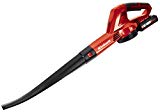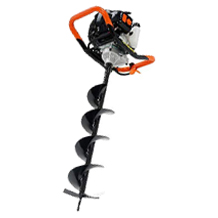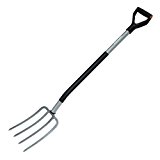Garden shredder purchasing advice: how to choose the right product
- The most important facts in brief
- A shredder processes tree prunings and other garden waste into mulch or prepares them for compost.
- Electric shredders are usually sufficient for private gardens.
- Blade shredders are ideal for green cuttings and smaller branches. They are relatively noisy, but also inexpensive to buy.
- Roller and turbine shredders can also be used for larger branches or knotty garden waste.
- The maximum branch thickness, the material throughput and the size of the collection container are the most important purchase criteria for garden shredders.
The garden shredder as a solution for space problems with garden waste
Garden shredders are useful in both small and large gardens. They can be used to bring bulky branches and twigs from trees, bushes or shrubs down to a manageable size as well as the remains from the last hedge trimming. Leaves and grass can also be shredded and used for compost or as mulch.
How does a shredder work?
There are different types of garden shredders, but their mode of operation is essentially the same. At the top of the machine is the feed hopper, through which the garden waste is fed. Some shredders have a self-feeding mechanism and pull the material evenly into their shredding tool. This can be a knife or a roller. So-called turbine shredders have a combination of both. Depending on the tool inside, a shredder is called either a knife shredder, roller shredder or turbine shredder (with knife and roller).
When does it make sense to purchase a garden shredder?
The purchase of a shredder always makes sense when a large amount of garden waste accumulates regularly and there is perhaps no collection point nearby. Disposal via the organic waste bin is similarly impractical and compost also quickly reaches its limits with bulky waste. A shredder brings significant relief here. The waste is shredded and is thus ideal for making your own compost. Alternatively, it can also be used perfectly for mulching. In this way, the garden shredder gives the waste meaningful new tasks in the home garden.
What types of garden shredders are there?
There are three different types of shredders to choose from. The shredding tool not only determines its name, but also which garden waste can be processed well. A blade shredder is a good choice for soft waste such as grass or leaves. It can also process thin branches or twigs without any problems. However, from a branch thickness of about four centimetres, it starts to falter. This is where a roller shredder is better. It can process even larger quantities of wood without any problems and can also shred gnarled branches. So if a large amount of tree or shrub cuttings or hedge trimmings accumulates regularly, a roller shredder is the better choice. Turbine shredders, the third type, combine the two technologies of the aforementioned shredders. This makes them more versatile, but also considerably more expensive to buy.
What kind of waste the garden shredder processes
There is a wide variety of waste in the garden. Many of them are rather bulky and a bit time-consuming to dispose of. This makes them ideal candidates for further processing in the shredder. Depending on the type of machine, the following waste can be shredded:
- Grass
- Leaves
- Thin branches and twigs
- Coarse shrub or tree cuttings
- Hedge trimmings
- Various other vegetable waste and cuttings
Drive of the garden shredder: Electric or petrol?
Most private garden shredders have an electric drive. Since the amount of waste produced in private gardens is usually rather manageable, devices with this drive are usually sufficient. Only in very large gardens with correspondingly large amounts of garden waste is a petrol-driven shredder useful. For hobby gardeners, it is usually not worth buying such a device. However, if you live on a farm with a lot of land, for example, where a lot of cuttings accumulate, it makes sense to buy a powerful petrol model.
Advantages and disadvantages of an electric shredder
Electric shredders are practical, quickly ready for use and no petrol needs to be kept in stock for their operation. They are available in two power classes: Units with alternating current are particularly suitable for soft, smaller cuttings. If the shredder works with high voltage current, it can also easily handle woody garden waste.
But: There must always be a suitable socket within reach of the cable. An extension cable gives a certain flexibility, but it quickly becomes impractical in larger gardens.
A garden shredder with a rechargeable battery that works independently of the mains supply would certainly be a nice alternative. However, due to the high energy requirements for shredding, there are no battery-powered models.
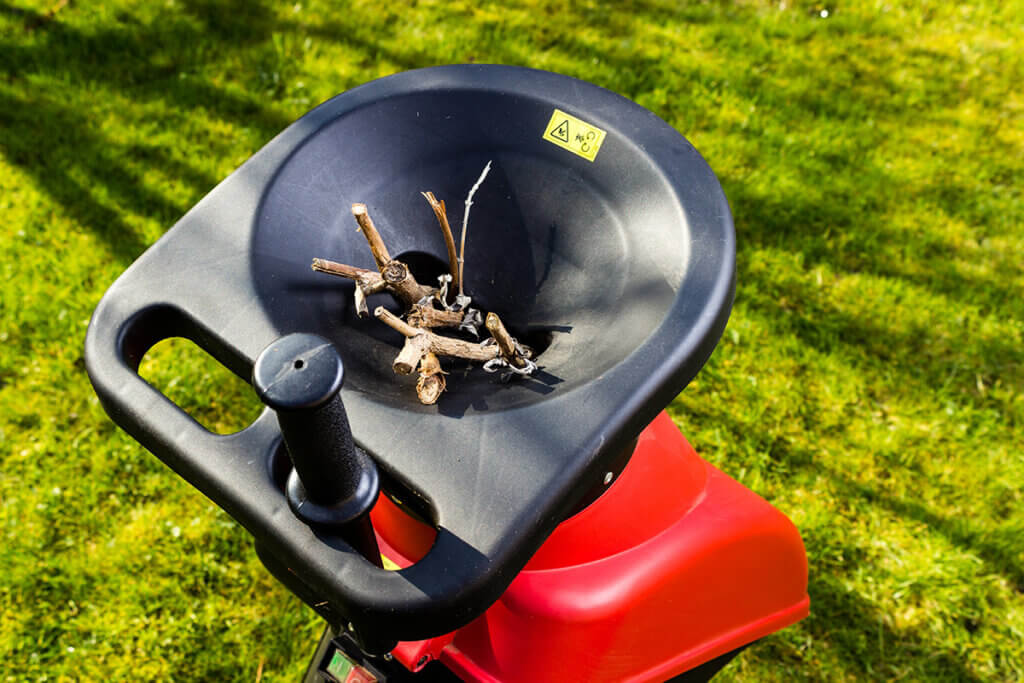
Advantages and disadvantages of a petrol shredder
Petrol shredders are much more flexible in terms of location. They do not need a power socket within reach. They also have more power and can easily process even the coarsest garden waste.
But: There must always be a sufficient supply of petrol. Nothing is more annoying than having to interrupt work because the tank is empty and the canister has run out. In such a case, the only solution is to go to the nearest petrol station.
Types of garden shredder at a glance
The shredding tool inside the shredder defines its type as well as the waste that can be processed. Based on the expected garden waste, it is therefore at least possible to decide on the appropriate type of shredder.
The knife shredder
Knife shredders were the first devices on the market. The cuttings are shredded with small knives and thrown into the collection container.
Pro points
- Efficient and reliable for soft garden waste and thin branches
- Relatively cheap
- Comparatively handy
- Perfect for making mulch
Drawbacks
- Usually without self-feeding
- Very noisy
- Costly maintenance
- Clippings decompose more slowly than other types of shredders
Knife shredders do not usually have a self-feeding mechanism. The garden waste must therefore be fed in manually. With a noise level of usually more than 100 decibels, models of this type are among the loudest on the market. Compared to the other devices, however, blade shredders are often considerably cheaper.
Blade shredders can be used for the following garden waste:
- Grass
- Leaves
- Scrub
- Thin twigs
The roller shredder
Roller shredders shred the material with rollers instead of knives. This means that they work more slowly, but also much more quietly. They can also process coarser garden waste without any problems. Due to their low noise level, they are often referred to as quiet shredders.
Pro points
- Suitable for woody garden waste
- Comparatively quiet
- Usually with self-closing mechanism
- Low maintenance
Drawbacks
- Relatively expensive
- Slower than knife shredders
- Not suitable for soft waste
A roller rotates inside the shredder. It presses the collected waste against a metal plate and breaks or crushes it in the process. The distance of this plate can be adjusted on the outside of the device and thus adapted to the diameter of the branches or twigs.
A roller shredder is recommended for the following garden waste:
- twigs and branches with a maximum diameter of 4.5 centimetres
- Hedge trimmings
- Tree and shrub cuttings
- Roots
The turbine shredder
The turbine shredder works with a combination of knives and rollers. This combines the advantages of knife and roller shredders, which is, however, also reflected in the price.
Pro points
- Suitable for soft and hard garden waste
- Almost always with self-closing mechanism
- Relatively quiet
Drawbacks
- The most expensive shredders
A turbine fitted with blades operates inside the shredder. This is also known as a milling drum cutter. It rotates slowly like a roller and shreds the fed material. Depending on the product, the turbine can be installed either vertically or horizontally. However, the basic functional principle remains the same. The garden waste is independently pulled into the device and shredded there. Thin as well as thick branches are shredded equally reliably.
Compared to blade shredders, turbine shredders are relatively quiet. Due to the combination of the two technologies, almost all garden waste can be processed:
- Soft material such as grass or leaves
- Thin branches and twigs
- Thick, hard branches
- Roots
- Other waste
The most important criteria for buying a garden shredder
Now that the three types of shredder have been presented, the question arises: How do you choose the right product from all the offers? The decision for one of the types is made relatively quickly, based on the garden waste, but still the agony of choice remains. Then a look at the features of the various devices will help.
Drive and performance
Garden shredders can be purchased with either electric or petrol drive. Electric shredders are often smaller and lighter in comparison. They take up less space and are also more environmentally friendly. The indicated wattage of the electric shredder indicates the power of the motor. Soft garden waste and thin branches can be shredded easily. However, to be able to process thicker branches or tree cuttings, the shredder needs more wattage. A shredder with a power of about 2.5 kilowatts (1 kilowatt corresponds to 1,000 watts) is usually sufficient for the private garden. Particularly powerful electric roller shredders reach up to 3 kilowatts.
A petrol-powered garden shredder is significantly more powerful in a direct comparison. It can also be used more flexibly, as it can be moved freely through the garden without a long cable. The power of the engine here starts at around 5 kilowatts. Models with more than 10 kilowatts are also available. Base the power on the type of waste you mainly use the shredder for. The thicker the branches you want to shred, the more power the device needs.
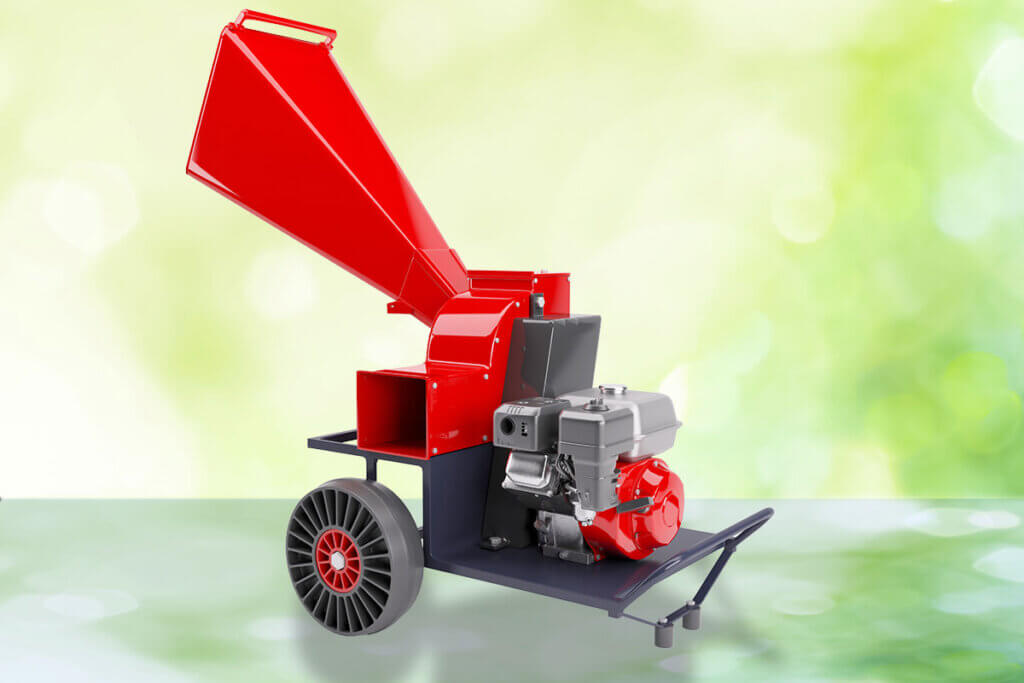
Knives and rollers
The tool inside the shredder is a crucial point for the selection of a suitable device. It is essential that it fits the type of waste you want to process. Otherwise you will not get useful results. For wooden garden waste such as tree or hedge cuttings, a roller shredder makes sense. If, instead, you want to process leaves or grass for mulching, a blade shredder is much more suitable. Turbine shredders, on the other hand, are universalists: no matter what you put in front of them, they can chop up almost anything.
Maximum branch thickness
To give customers an idea of the shredder’s capabilities, manufacturers specify the maximum material thickness for the shredder. If you mainly want to shred tree prunings or hedge trimmings in your garden, you should definitely pay attention to this in order to find a suitable shredder. It also makes sense not to push this limit – if the equipment is working at its limit, it often makes slow progress and tends to jam. It is better to buy a more powerful model and still have some room for improvement than to buy an expensive device and then not get any further. If you really want to chop a thick branch, you can prepare it: Use an axe to split the wood lengthwise. The shredder then breaks it across the direction of growth.
What is the material throughput of a garden shredder?
The working speed of the shredder becomes interesting at the latest when a lot of garden waste accumulates. Nobody wants to stand at the shredder for hours shredding the waste. Of course, this is only an approximate value, as it always depends on the type of waste and its hardness. Gnarly roots simply take longer than grass, for example. Blade shredders usually manage about 90 kilograms of garden waste per hour. Turbine shredders are much more powerful at around 230 kilograms per hour, but they are also more expensive. For small gardens, this is a lot, as there is seldom more than a few kilos of shredded material.
Does the garden shredder need a self-feeding mechanism?
A self-feeding mechanism is always a plus for a shredder. This means that the material does not have to be pushed in manually. This significantly reduces the risk of injury. In addition, the work with such a shredder is more efficient. While it pulls in and shreds the material independently, supplies can already be brought in.
A roller shredder always has a self-feeding system, as the roller takes over this function. It is also often found in turbine shredders. However, this function is not standard on knife shredders, but is only found on particularly well-equipped machines.
How is the shredded material collected?
Many garden shredders have a catch box included in the scope of delivery. These catch boxes or catch baskets have a volume of 40 to approx. 70 litres. This means that they offer enough space to collect the shredded garden waste without having to empty them all the time. They facilitate the disposal of the shredded waste. The mulch obtained can be distributed directly from the catch box to the desired areas. Professional shredders usually have an ejector instead of the catcher box or bag. This allows it to be transported directly onto a trailer or another vehicle, for example.
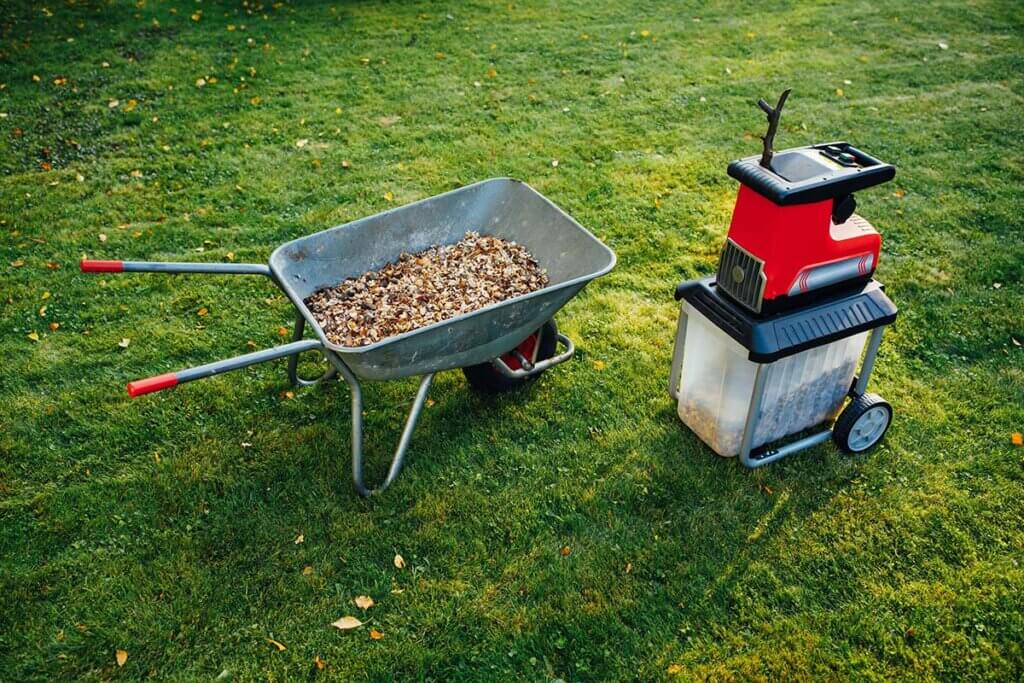
Why are wheels so important for a garden shredder?
Even light shredders do not always stand in the same place. With a chassis and wheels, they are flexible and the hobby gardener can move them easily Especially with the much heavier petrol-powered models, the wheels are necessary to be able to move them. As a rule, shredders have two wheels and an axle on – so they have to be tilted to move on
Weight: mobility and stability
Garden shredders come in different weight classes. Electric shredders are often significantly lighter than petrol-powered models. A heavy petrol engine can weigh a hundred kilograms or more, while the weight of electric shredders is usually in the range of 10 to 30 kilograms maximum.
Wheels, however, make even heavy shredders manoeuvrable. Nevertheless, it takes more power to move them in comparison. Therefore, the weight should always be taken into account when choosing a machine and adapted to your own physical capabilities.
However, heavy models also have a decisive advantage: they stand firmly and securely. If the shredder is too light, there is a risk that it will tip over during work. So caution and vigilance are called for here.
Volume
Even if it is only used on a few days and then only for a rather short period of time: If the shredder is too loud, it is quickly perceived as annoying. This can also lead to annoyance with the neighbours. Especially in densely built-up residential areas, a shredder that is as quiet as possible should therefore be chosen. An electric drive is always much quieter than a petrol drive. A blade shredder is louder than a roller shredder during shredding.
However, no shredder is really quiet. Even machines that are explicitly advertised as quiet shredders often produce more than 90 decibels. This is significantly louder than a hoover, for example, and corresponds roughly to the volume of a door slamming shut – unlike a slamming door, however, a shredder produces this sound level permanently. Petrol shredders are even louder at 110 decibels and more. The increase of 20 decibels may not seem much at first glance, but since the decibel scale is logarithmic, it means a multiplication of the sound pressure.
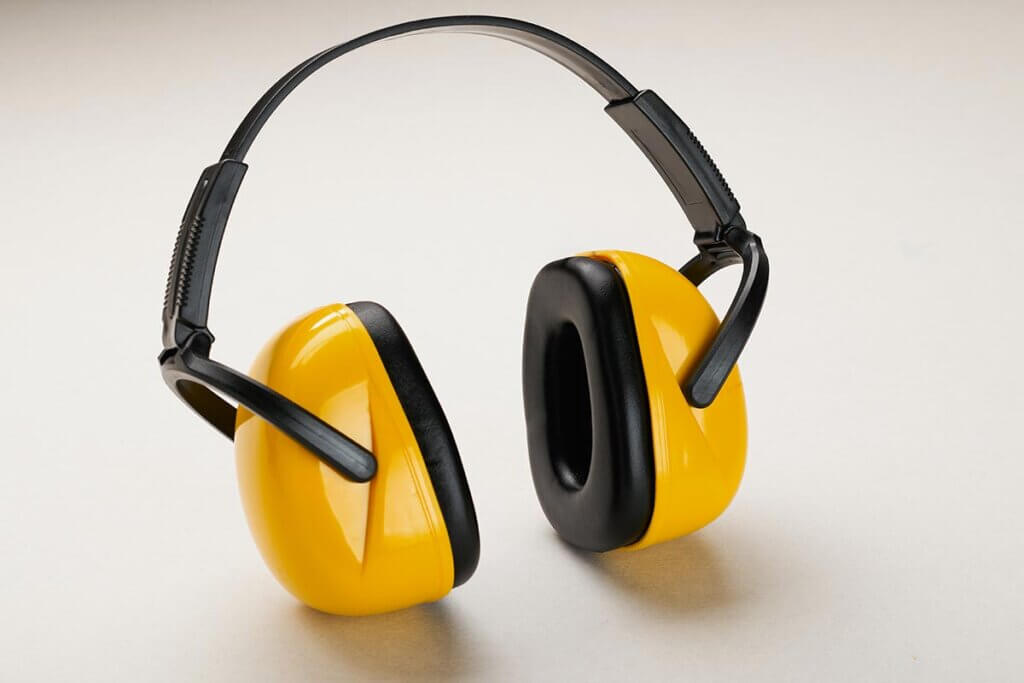
Safety functions and accessories
The safety functions and accessories of the garden shredder vary depending on the manufacturer. However, the following always applies: Safety first. Hearing protection, which is often recommended, is just one item on the list. Some shredders come with numerous other safety features or additional accessories.
A feed hopper is an important safety factor on the garden shredder. The funnel prevents unintentional reaching into the shredding tool. This significantly reduces the risk of injury.
The tamper is a useful accessory for shredders without a self-feeding mechanism. It makes it easier to push the garden waste and at the same time ensures a minimum distance from the shredding tool to the hand.
Protective functions for interrupting operation in the event of a problem can look different on the shredder: It can be a motor protection switch, a motor brake or even an overload protection. They all have the task of protecting the engine from damage. To do this, it is either slowed down or even stopped – either by a switch or a sensor that detects too much material being fed in.
Something can always get caught or jammed. Reverse rotation helps to get the tool free again without having to reach in with your hand.
A restart safety device is only found on shredders with an electric drive. It prevents the tool from restarting after its work has been interrupted by a power failure.
Maintenance and care
To ensure that the garden shredder performs well in the long term, it should be cleaned of coarse dirt and garden waste residues after each use. Especially the shredding tools inside the shredder should be cleaned well.
In comparison, roller shredders are easier to maintain than knife shredders. Often, a reverse run of the roller is enough to eject any residual garden waste. This is also due to the fact that the coarse and dry shredding material for which they are intended does not cause so much dirt. With the blade shredder, on the other hand, several manual operations are necessary for cleaning:
- First, make sure that the shredder is definitely off and cannot start accidentally. Units with electric drives should be disconnected from the power supply.
- Now the housing of the shredder can be opened according to the manufacturer’s instructions.
- Use a small wire brush to remove dirt from the cutting blades and then rub them with suitable maintenance oil.
- Now the housing can be closed again.
In the case of knife shredders, it also makes sense to check the sharpness of the knives at regular intervals. They must then either be turned or replaced with new ones.
What garden shredders cost
As nice as it is to choose the best appliance according to its technical features and possibilities, it makes sense to pay attention to a good price-performance ratio. However, if you buy too cheaply, you will soon regret it when it comes to shredders.
A good middle ground is the best choice. The shredder should reliably shred garden waste while staying within budget. Entry-level models are often available from around 100 euros. For larger, more powerful models, you should budget at least 200 euros. Petrol models are always significantly more expensive than electric shredders. They start at around 700 euros for the small, simple devices.
Why is a garden shredder a sensible purchase?
Garden shredders are one thing above all: useful. They support the sustainable management of the garden by giving the garden waste new tasks. A garden shredder relieves the burden on the organic waste bin and saves the constant trip to the nearest collection point. Shredded garden waste simply takes up less space in comparison, and it is also a cost-effective and sustainable alternative to expensive and ecologically questionable artificial fertiliser.
Possible uses of shredded material
The type of shredder not only has an effect on the shredded material that is ejected, but also on its further possible uses. A knife shredder cuts up the fed material. This means that it rots more slowly and is therefore the perfect mulch. This can be used either as a source of nutrients or as a decorative element. Small shredded grass or leaves are ideal for supplying plants with nutrients. Thin shredded twigs make a great mulch on flower beds or similar. Another advantage is that they protect the plants from possible frost and prevent the beds from becoming overgrown with weeds. Simply spread a thick layer and trees and shrubs are well cared for all around.
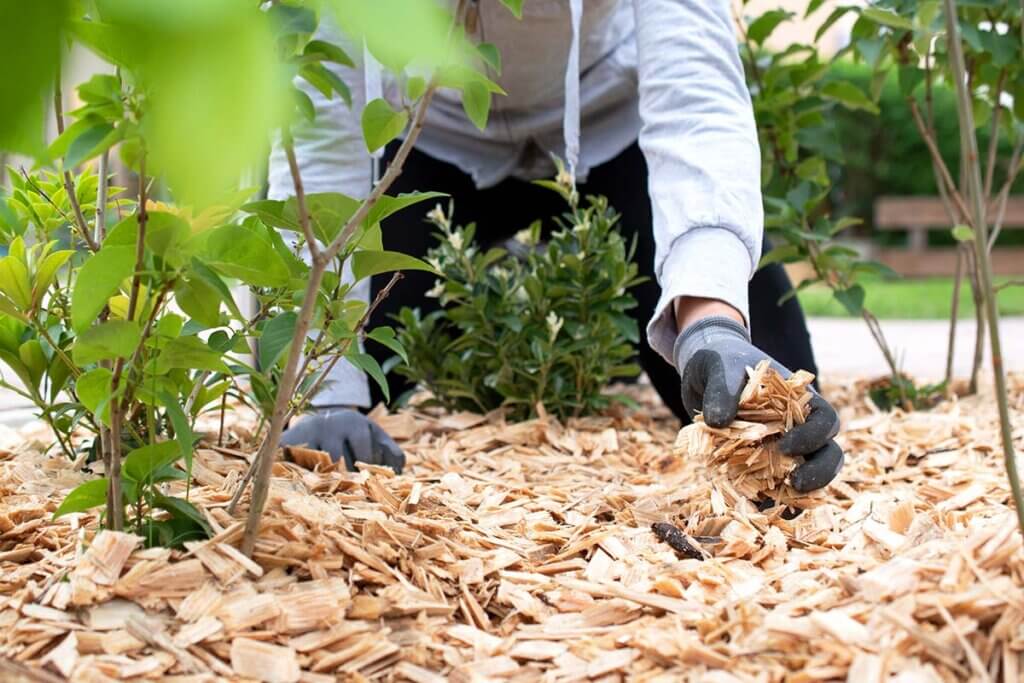
The shredded material from roller shredders is somewhat coarser in comparison. It is crushed during the shredding process so that the nutrients it contains can escape more easily. The edges are broken and not as smooth as with a knife shredder. This makes them ideal for making compost. Shredded branches or roots are also the perfect base layer for raised beds.
Working safely with the garden shredder
Motorised equipment always requires certain safety measures. This is no different with garden shredders. The following measures are sensible when using it:
Hearing protection: Even quiet shredders still produce a noise level of up to 90 decibels.
Safety goggles or face shield: Something can always be thrown out of the shredding tool. To prevent eye damage, appropriate protection is advisable.
Respiratory protection: When very dry waste is shredded, dust is inevitably produced. Respiratory protection is therefore recommended in these cases.
Gloves: A sensible work protection measure not only when shredding branches with thorns.
Safe clothing: It is better to have arms and legs covered to protect them from ejected shredded material. Clothing that is too loose or elements that hang down should also be avoided when using the shredder.
Blockages in the unit should only be tackled when the engine is switched off. It is good if the shredder has a reverse function. In most cases, this will clear a blockage and manual intervention will no longer be necessary.
A garden shredder is not a toy. It should therefore not be operated by children or within their reach.
Fig. 1: © Utirolf / stock.adobe.com | Fig. 2: © Kirsty Pargeter / stock.adobe.com | Fig. 3: © nikkytok / stock.adobe.com | Fig. 4: © SerPhoto / stock.adobe.com | Fig. 5: © s-motive / stock.adobe.com

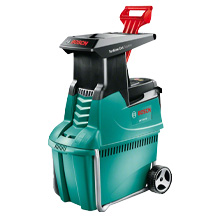
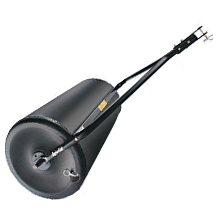
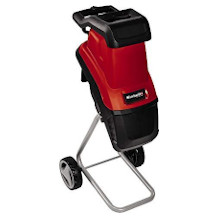
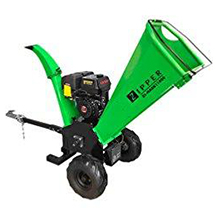
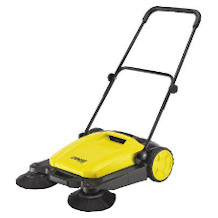
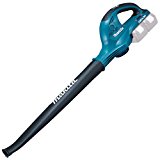
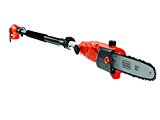
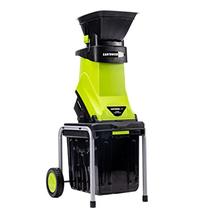

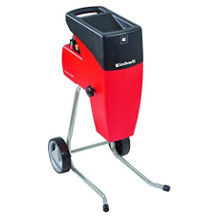





 3,726 reviews
3,726 reviews
